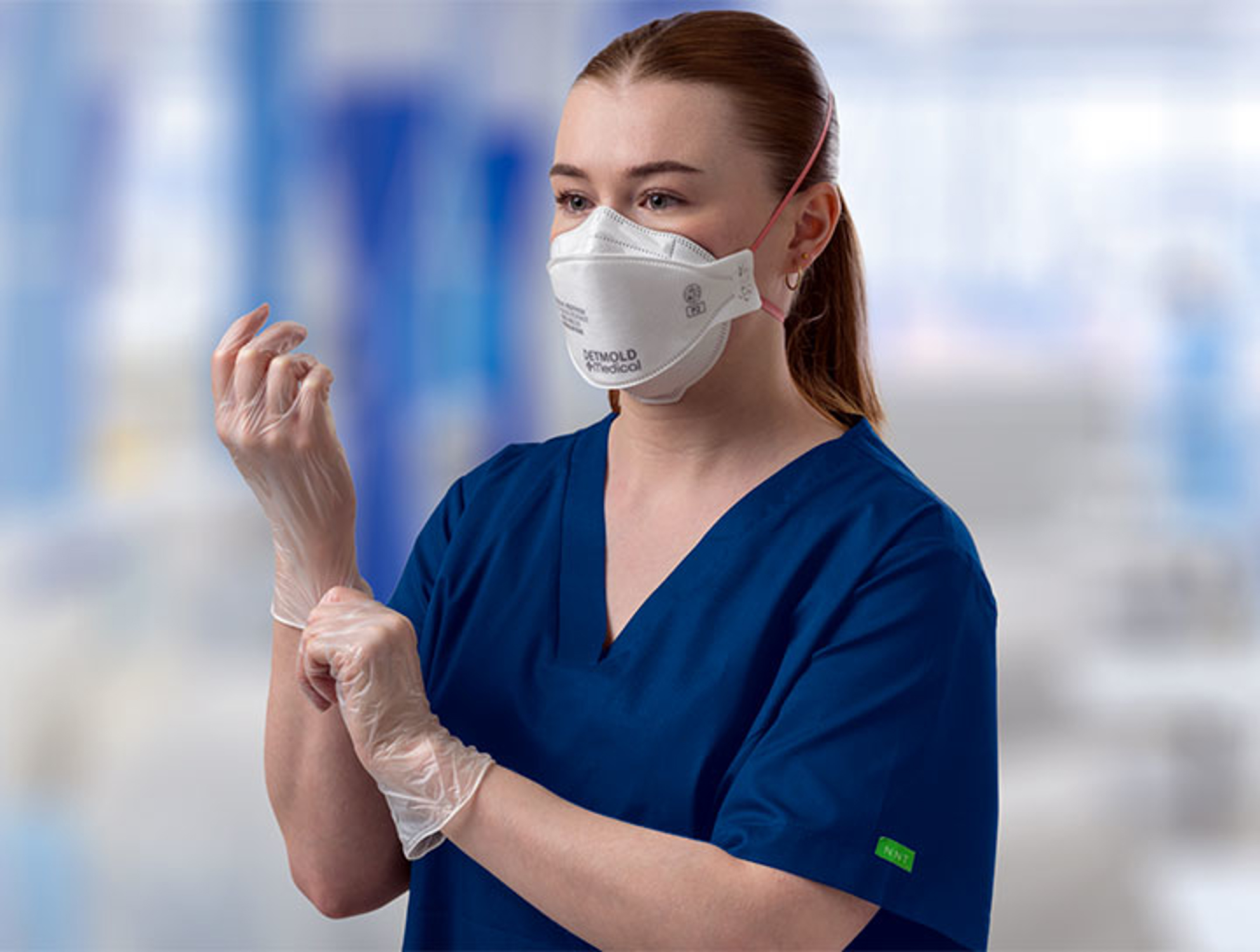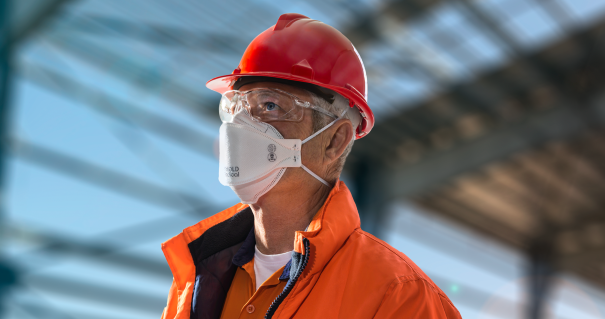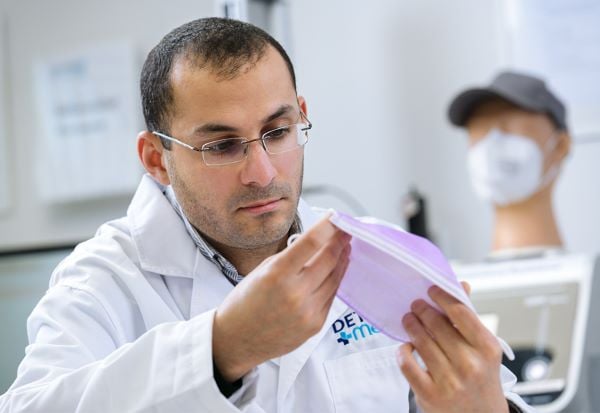While face masks and respirators are known to protect wearers against contracting airborne viruses, infections and disease, they can also be worn by infected people to help reduce the spread of the virus.
Read on to learn more about the role of surgical respirator masks as a source of infection control in hospital settings and operating rooms.
What is a surgical respirator mask?
A surgical respirator mask combines the features of both surgical masks and respirators to provide a dual purpose of source control and respiratory protection. As such, these masks provide a higher level of protection compared to a medical or surgical face mask.
Surgical respirators that have been produced in line with a cross-section of global performance requirements for a P2 Class Respirator and an N95 Respirator specified by AS/NZS 1716:2012 Respiratory Protective Devices and the NIOSH 42 CFR Part 84. Not to mention, surgical respirator masks must be included on the Australian Register of Therapeutic Goods (ARTG) before they can be manufactured or supplied for commercial use in Australia. In order to be included on the ARTG, medical face masks and respirators have to go through a number of steps before obtaining approval.

These respirators are designed to filter out at least 95% of airborne particles, including large respiratory droplets and smaller aerosols. Plus, the outer layers of surgical respirators often include fluid-resistant properties to protect against splashes and sprays of bodily fluids, which is critical in hospitals and operating rooms.
Surgical respirators must fit snugly to the wearer's face to provide adequate fit and the intended level of protection. This creates a seal that minimises gaps through which unfiltered air can pass. Adjustable nose pieces and elastic head straps ensure a tight fit
Source control vs respiratory protection
Surgical respirator masks are designed for use in healthcare environments where a person is at risk of blood or fluid splash. These masks filter out non-oil-based airborne particulates while also providing bacterial filtration and blood and fluid splash resistance. Although surgical respirators protect wearers against bacteria and viruses, they can also be used as source control to reduce the risk of spread from infected patients in hospitals and operating rooms. Here’s how.
Respiratory protection
As a form of respiratory protection, surgical respirator masks protect the wearer from inhaling hazardous airborne particles, including infectious diseases and viruses. The various layers of the respirator mask works to filter out airborne particles effectively when the mask fits well on the wearer's face, creating a tight seal.
Source control
Surgical respirator masks can also act as a form of source or infection control in hospitals and operating rooms. In these instances, the respirator prevents the spread of infectious agents from the wearer to others. The inner layers of the mask capture the wearer’s respiratory droplets and secretions, reducing the risk of transmitting infections to others.
Tips for using surgical respirator masks for infection control
Using a surgical respirator mask effectively for infection control in hospitals, operating rooms and other healthcare settings requires careful attention to fit, hygiene and proper handling.
Here are some tips to ensure optimal infection control.
Ensure proper fit and seal
Surgical respirator masks are suitable for use in healthcare and hospital settings that conduct fit testing procedures. With this in mind, it’s important to ensure the mask has been fit-tested for the specific wearer. This process ensures the mask fits correctly and forms an adequate seal around the nose and mouth.
The user should also perform a seal check each time the mask is worn. This involves placing both hands over the mask and inhaling and exhaling to detect air leaks. That way, wearers are able to determine whether the mask is correctly fitted before they’re exposed to reduce the spread of potentially hazardous particles.
Follow usage instructions
Surgical respirator wearers must follow correct donning and doffing procedures when putting on or removing a respirator mask to reduce the risk of infection. Be sure to follow the manufacturer’s instructions for use to ensure you’re wearing the respirator correctly. And don’t forget to dispose of the respirator mask responsibly after use, especially if it’s been worn by an infected person.
Implement good hygiene practices
Whether the surgical respirator is being used for respiratory protection or infection control, it’s still important to ensure the wearer follows hygiene practices when wearing the mask.
Be sure to perform hand hygiene before and after touching the mask, whether donning, doffing or adjusting it. This involves washing your hands with soap and water or using hand sanitiser.
It’s also important to avoid from touching the mask once it’s on. If you need to adjust it, clean your hands before and after.
Replace respirator as needed
As a general rule, single-use surgical respirators should be replaced every four hours or when they become damp, soiled, damaged or difficult to breathe through. Prolonged respirator use can lead to the buildup of contaminants on the mask surface, which can reduce its filtration efficiency and increase the risk of inhaling harmful particles.
Take additional protective measures
Taking additional protective measures in hospital settings is often worth the effort to reduce the risk of infection and transmission. Hospital workers should wear other appropriate personal protective equipment (PPE), such as gowns and gloves, as required by the procedure and infection control guidelines. They should also wear face shields or goggles in addition to the surgical respirator mask to protect against splashes and droplets.
By following these tips, healthcare workers can maximise the effectiveness of surgical respirator masks in preventing the spread of infections in hospitals and operating rooms.
At Demold Medical, we’ve created two high-quality surgical respirators: the N95 Surgical Respirator Mask and the L3 N95 Surgical Tri-Panel respirator. Both these respirators are recommended for use in health care and hospital settings such as operating theatres, emergency, infection control, oncology, haematology, day surgery, aged care and dental care. Explore our collection of respirator masks to find the right respirator for your needs.





